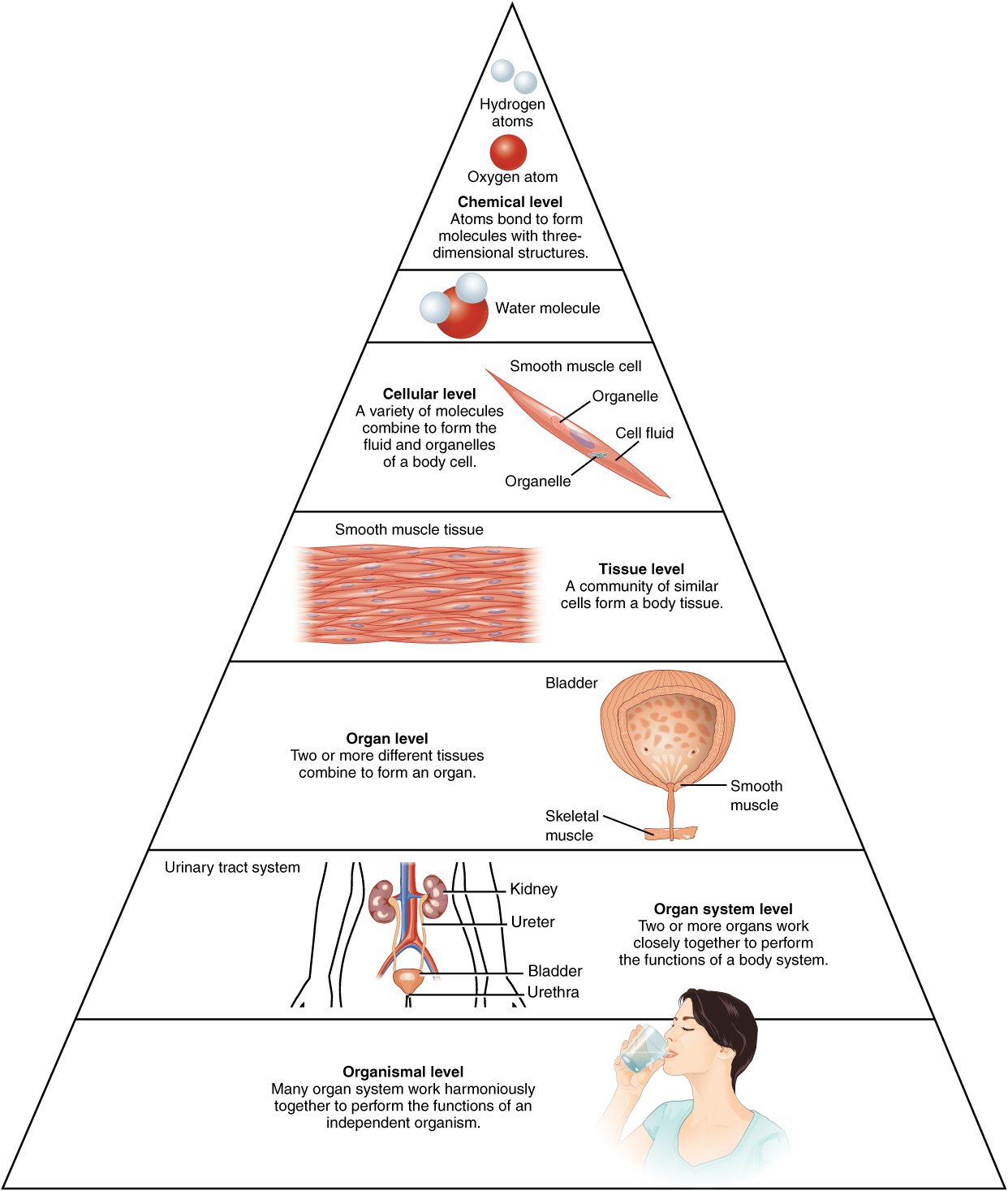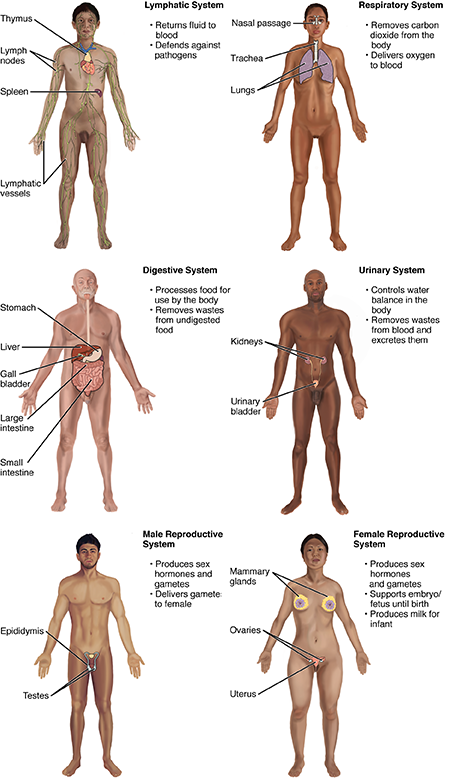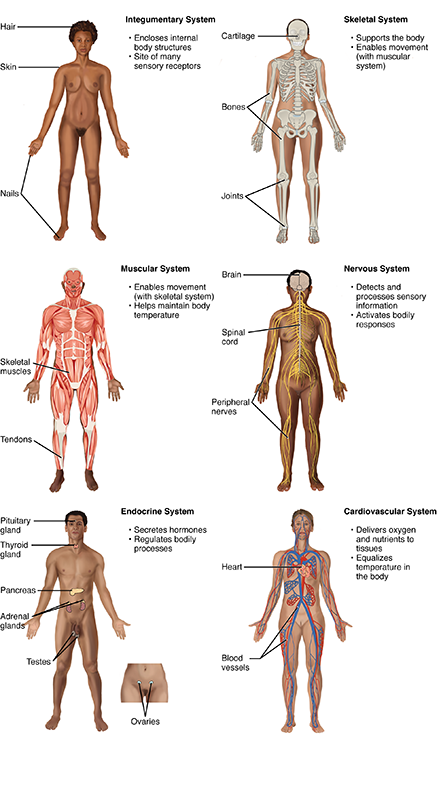1.2 Structural Organization of the Human Body
Learning Objectives
By the end of this section, you will be able to:
- Describe the structure of the body, from simplest to most complex
- Describe the interrelationships between the organ systems
Before you begin to study the different structures and functions of the human body, it is helpful to consider its basic architecture; that is, how its smallest parts are assembled into larger structures. It is convenient to consider the structures of the body in terms of fundamental levels of organization that increase in complexity, such as (from smallest to largest): chemicals, cells, tissues, organs, organ systems, and an organism.

The organization of the body often is discussed in terms of the distinct levels of increasing complexity, from the smallest chemical building blocks to a unique human organism.
The Levels of Organization
To study the chemical level of organization, scientists consider the simplest building blocks of matter: subatomic particles, atoms and molecules. All matter in the universe is composed of one or more unique pure substances called elements. Examples of these elements are hydrogen, oxygen, carbon, nitrogen, calcium, and iron. The smallest unit of any of these pure substances (elements) is an atom. Atoms are made up of subatomic particles such as the proton, electron and neutron. Two or more atoms combine to form a molecule, such as the water molecules, proteins, and sugars found in living things. Molecules are the chemical building blocks of all body structures.
A cell is the smallest independently functioning unit of a living organism. Single celled organisms, like bacteria, are extremely small, independently-living organisms with a cellular structure. Humans are multicellular organisms with independent cells working in concert together. Each bacterium is a single cell. All living structures of human anatomy contain cells, and almost all functions of human physiology are performed in cells or are initiated by cells.
A human cell typically consists of flexible membranes that enclose cytoplasm, a water-based cellular fluid, with a variety of tiny functioning units called organelles. In humans, as in all organisms, cells perform all functions of life.
A tissue is a group of many similar cells (though sometimes composed of a few related types) that work together to perform a specific function. An organ is an anatomically distinct structure of the body composed of two or more tissue types. Each organ performs one or more specific physiological functions. An organ system is a group of organs that work together to perform major functions or meet physiological needs of the body.
This book covers eleven distinct organ systems in the human body (Figure 1.2.2). Assigning organs to organ systems can be imprecise since organs that “belong” to one system can also have functions integral to another system. In fact, most organs contribute to more than one system.

 Figure 1.2.2 – Organ Systems of the Human Body: Organs that work together are grouped into organ systems.
Figure 1.2.2 – Organ Systems of the Human Body: Organs that work together are grouped into organ systems.The organism level is the highest level of organization. An organism is a living being that has a cellular structure and that can independently perform all physiologic functions necessary for life. In multi-cellular organisms, including humans, all cells, tissues, organs, and organ systems of the body work together to maintain the life and health of the organism.
Chapter Review
Life processes of the human body are maintained at several levels of structural organization. These include the chemical, cellular, tissue, organ, organ system, and the organism level. Higher levels of organization are built from lower levels. Therefore, molecules combine to form cells, cells combine to form tissues, tissues combine to form organs, organs combine to form organ systems, and organ systems combine to form organisms.
Review Questions
Critical Thinking Questions
Cancers are defined by uncontrolled growth at the cellular level. Describe why cancer is a problem for the organism as a whole using your understanding of the levels of organization.
Cellular problems create issues at more complex levels of organization. For example, a tumor can interrupt the function of the organ it is in, despite the fact that it is a molecular mutation with direct cellular implications.
The female ovaries and the male testes are a part of which body system? Can these organs be members of more than one organ system? Why or why not?
The female ovaries and the male testes are parts of the reproductive system. They also secrete hormones, as does the endocrine system, therefore, ovaries and testes function within both the endocrine and reproductive systems.
This work, Anatomy & Physiology, is adapted from Anatomy & Physiology by OpenStax, licensed under CC BY. This edition, with revised content and artwork, is licensed under CC BY-SA except where otherwise noted.
Images, from Anatomy & Physiology by OpenStax, are licensed under CC BY except where otherwise noted.
Access the original for free at https://openstax.org/books/anatomy-and-physiology/pages/1-introduction.

